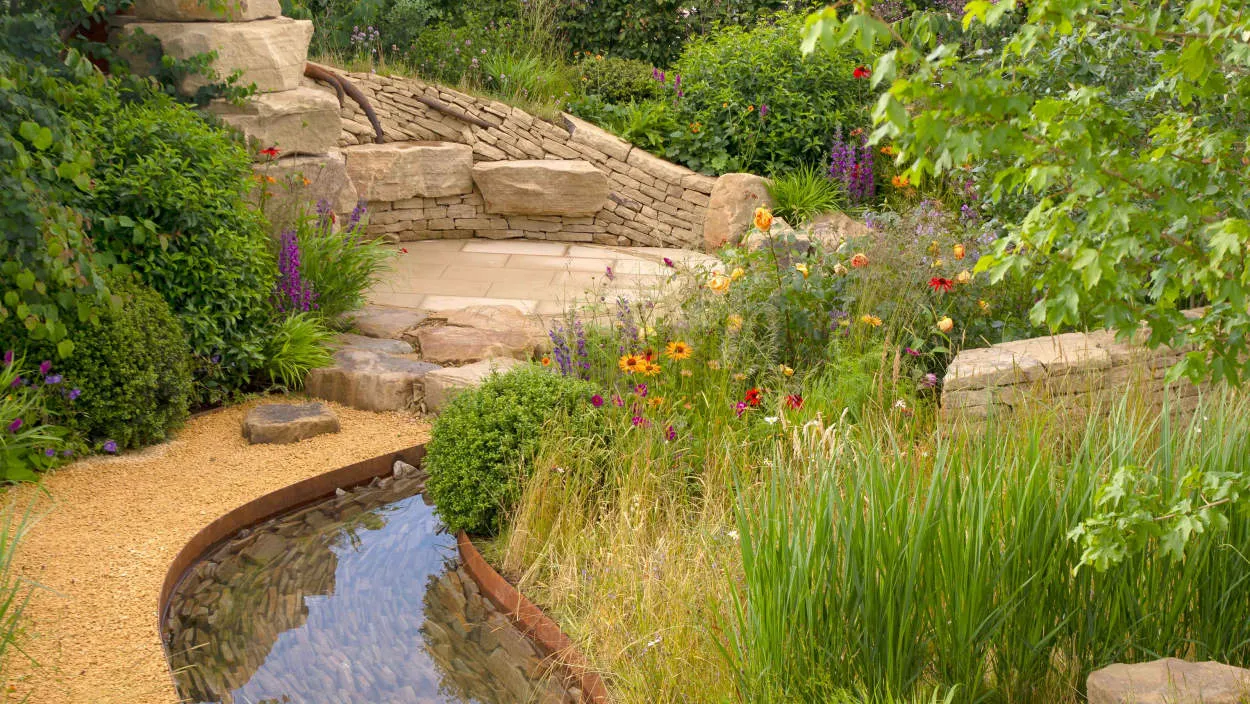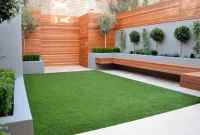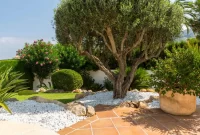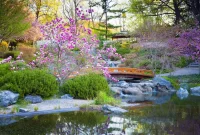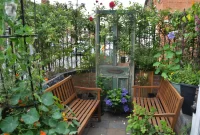A wildlife-friendly garden design aims to create an inviting habitat for a diverse range of animal species. By incorporating native plants, providing food and water sources, and creating sheltered areas, this design allows wildlife to thrive. Discover how to transform your garden into a sanctuary for birds, bees, butterflies, and more.
Attracting Birds
Having a wildlife-friendly garden design can greatly contribute to attracting birds to your outdoor space. By providing the right elements, you can turn your garden into a welcoming sanctuary for these beautiful creatures.
Plant Native Trees and Shrubs
Start by incorporating native trees and shrubs into your garden. These plants not only provide suitable nesting spots but also attract insects, which are an essential food source for many bird species.
Install Bird Feeders
Strategically place bird feeders throughout your garden, offering a variety of seeds, nuts, and suet. Different bird species have different feeding preferences, so it’s recommended to provide a mix of options to cater to various tastes.
Provide Water Sources
Water is vital for both drinking and bathing. Consider adding a birdbath or a small pond to your garden. Make sure to keep the water clean and fresh, changing it regularly.
Create Sheltered Areas
Design your garden with a mix of open spaces and dense vegetation to offer shelter and protection for birds. Dense shrubs and trees with foliage can provide excellent hiding spots, especially during extreme weather conditions.
Avoid Harmful Chemicals
When maintaining your garden, opt for natural pest control methods and avoid using harmful chemicals. Pesticides can harm birds directly or indirectly by disrupting their food chain. Embrace the presence of beneficial insects that can help control pests naturally.
Manage Your Garden Responsibly
Ensure your garden is well-maintained by regularly cleaning bird feeders, removing any nesting materials that may harbor parasites, and eliminating potential hazards such as sharp objects or open containers that can harm birds.
In conclusion, attracting birds to your garden involves providing a suitable habitat with native plants, food sources, and water, while also promoting a safe and clean environment. By implementing these strategies, you can create a wildlife-friendly garden that will attract and support a diverse range of bird species.
Bees
Bees play a vital role in our ecosystem and are essential for pollination. Creating a wildlife-friendly garden design is crucial for attracting and supporting bees. Here are some key considerations:
1. Plant Native Flowers
Choose a variety of native flowering plants that provide nectar and pollen throughout the year. Bees are attracted to bright colors, so opt for flowers such as lavender, sunflowers, and coneflowers.
2. Provide a Water Source
Include a shallow water feature like a birdbath or a small water pond. Bees need water for hydration and to cool down especially during hot weather.
3. Avoid Pesticides
Avoid using chemical pesticides as they can negatively affect bees and other beneficial insects. Opt for natural alternatives or introduce plants that naturally repel pests.
4. Create Nesting Sites
Provide nesting sites for solitary bees. This can be achieved by keeping an undisturbed area of bare soil or providing bee houses with small holes for them to nest in.
5. Provide Shelter
Include a variety of plants for bees to find shelter, such as shrubs and trees. These plants also provide additional food sources with their flowers.
6. Maintain Year-Round Blooms
Plan your garden design to ensure that there are blooms throughout the year. This will provide consistent food sources for bees during different seasons.
Wildlife-Friendly Garden Design and Butterflies
Butterflies are not only beautiful creatures but also important pollinators in our ecosystem. By designing a wildlife-friendly garden, you can attract butterflies and create a vibrant habitat for them. Here are some tips for incorporating butterfly-friendly elements into your garden:
-
Plant Native Flowers:
Choose native flowers that provide nectar and serve as host plants for butterfly larvae. Some popular options include milkweed, coneflower, and black-eyed susan.
-
Create a Sunny Spot:
Butterflies thrive in sunny areas, so make sure to create open spaces in your garden where they can bask in the sun and absorb warmth.
-
Include a Variety of Plants:
Offer different types of plants that bloom at different times of the year to provide a continuous food source for butterflies throughout their lifecycle.
-
Provide Shelter:
Incorporate shrubs, trees, and tall grasses in your garden to offer shelter and protection for butterflies during inclement weather and winter months.
-
Avoid Pesticides:
Avoid using pesticides in your garden, as they can be harmful to butterflies and other beneficial insects. Instead, opt for natural methods of pest control.
-
Include Water Sources:
Butterflies need water for drinking and bathing. Place shallow dishes with clean water in your garden, providing a safe spot for them to hydrate.
By implementing these tips, you can create an inviting environment that not only attracts butterflies but also supports a diverse range of wildlife in your garden. Enjoy the beauty of these fluttering creatures while contributing to the conservation of our natural world!
Choosing Native Plants
In designing a wildlife-friendly garden, one essential aspect to consider is choosing native plants. Native plants are those that naturally occur in a specific region and have evolved alongside local wildlife, making them well-suited for supporting local ecosystems. Here are a few reasons why choosing native plants is beneficial:
- Biodiversity: Native plants attract a greater variety of wildlife, including birds, insects, and pollinators. They provide habitat, food sources, and nesting sites for these creatures, contributing to a more diverse and resilient ecosystem.
- Adaptability: Native plants are adapted to the local climate, soil, and conditions, making them more likely to thrive with minimal maintenance. They require less water, fertilizer, and pesticides compared to non-native species, reducing the negative impact on the environment.
- Ecosystem Services: Native plants play a crucial role in providing ecosystem services such as water filtration, soil stabilization, and carbon sequestration. They also contribute to the natural nutrient cycling and help prevent soil erosion.
- Supporting Endangered Species: By including native plants in your garden, you can support and promote the conservation of native wildlife, including endangered species that rely on specific plant species for their survival.
When choosing native plants, consult local gardening resources, nurseries, or conservation organizations to identify which plants are indigenous to your area. Consider factors such as sunlight requirements, soil types, and available space to ensure the best fit for your garden.
Creating Habitats for Wildlife
A wildlife-friendly garden design is essential to provide habitats for various species of wildlife. By incorporating specific features and elements into your garden, you can create a welcoming environment that attracts and supports local wildlife populations.
1. Native Plants
Choosing native plants is crucial as they are adapted to the local climate and provide appropriate food sources and shelter for native wildlife species. These plants also require less maintenance and are more resistant to pests and diseases.
2. Water Sources
Include water sources such as bird baths, small ponds, or even a shallow dish with fresh water. These water sources not only attract birds but also provide a vital drinking and bathing spot for other animals like butterflies, bees, and other beneficial insects.
3. Shelter and Nesting Areas
Integrate different types of vegetation, such as shrubs, trees, and tall grasses, to create shelter and nesting areas for wildlife. These areas provide safe havens for birds, small mammals, and insects to seek refuge, breed, and raise their young.
4. Wildlife-Friendly Elements
Install birdhouses, bat boxes, or butterfly houses to encourage specific wildlife species to inhabit your garden. These artificial structures mimic natural habitats that may be scarce in urban settings, providing alternative homes for wildlife.
5. Minimize Chemical Use
Avoid using chemical pesticides and herbicides as they can harm not only pests but also beneficial insects and other wildlife. Embrace organic gardening practices and explore natural alternatives to manage garden pests.
6. Sustainable Gardening Techniques
Implement sustainable gardening practices such as composting, rainwater harvesting, and reducing water consumption to create a more eco-friendly environment. These practices promote biodiversity and help support a healthy ecosystem.
By incorporating these wildlife-friendly garden design principles, you can contribute to the conservation of local wildlife populations while creating an aesthetically pleasing and vibrant garden.
Eco-Friendly Pest Control
In recent years, there has been a growing awareness about the importance of wildlife-friendly garden design. One aspect that plays a crucial role in creating a harmonious environment for wildlife is eco-friendly pest control.
Using chemical pesticides might provide a quick fix solution to pest problems, but they can harm beneficial insects and other wildlife that play a vital role in maintaining a balanced ecosystem. Instead, opt for natural and environmentally friendly pest control methods to ensure the well-being of both your garden and the wildlife that inhabits it.
Here are a few eco-friendly pest control techniques to consider:
1. Companion Planting
Companion planting involves growing certain plants together to deter pests naturally. For example, planting marigolds around your vegetable patch can help repel aphids and nematodes, while attracting beneficial insects like ladybugs and bees.
2. Biological Pest Control
Encouraging natural predators can be an effective way to control pest populations. For instance, introducing ladybugs to your garden can help keep aphids in check, while attracting birds can help control insects and rodents.
3. Organic Pesticides
If pests become particularly problematic, consider using organic pesticides. These are derived from natural sources and have a minimal impact on the environment. Neem oil, for example, can be used to control common garden pests like aphids, whiteflies, and mites.
4. Creating a Healthy Soil
Developing a healthy soil ecosystem is essential in reducing pest problems. Nutrient-rich soil will ensure that plants are strong and less susceptible to attacks from pests. Additionally, using compost and avoiding the use of synthetic fertilizers will promote beneficial soil organisms that help control pests naturally.
By adopting these eco-friendly pest control measures, you can maintain a thriving garden while also providing a safe and welcoming habitat for wildlife. Remember, taking care of the environment and preserving biodiversity should be at the heart of any garden design.
Conclusion
Creating a wildlife-friendly garden is not only beneficial for the environment but also provides a delightful space for both humans and animals to enjoy. By implementing simple measures such as planting native species, providing water sources, and avoiding the use of pesticides, we can encourage biodiversity and support the wellbeing of our local wildlife. Let’s embrace wildlife-friendly garden design and contribute to the preservation of our precious natural ecosystems.

